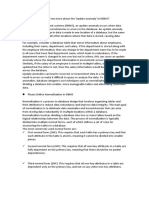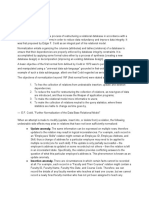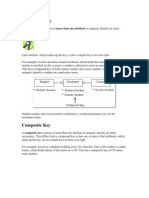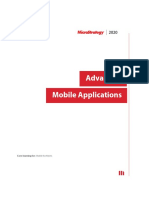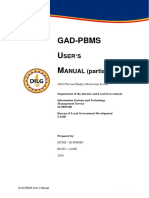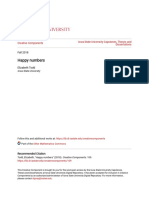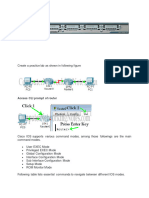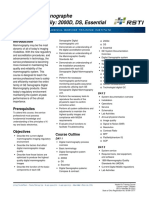0% found this document useful (0 votes)
44 views6 pagesModule 9
The document discusses data normalization and its importance in database design. Data normalization is the process of organizing data in a database to reduce data redundancy and improve data integrity. It involves separating large tables containing repeating groups of data into smaller tables and linking them together. The document outlines the three common normal forms - first normal form, second normal form, and third normal form. It provides an example of converting a flat database table into normalized tables following the first normal form to eliminate data anomalies like insertion, deletion, and update anomalies that can occur due to data redundancy.
Uploaded by
genemari gonzalesCopyright
© © All Rights Reserved
We take content rights seriously. If you suspect this is your content, claim it here.
Available Formats
Download as DOCX, PDF, TXT or read online on Scribd
0% found this document useful (0 votes)
44 views6 pagesModule 9
The document discusses data normalization and its importance in database design. Data normalization is the process of organizing data in a database to reduce data redundancy and improve data integrity. It involves separating large tables containing repeating groups of data into smaller tables and linking them together. The document outlines the three common normal forms - first normal form, second normal form, and third normal form. It provides an example of converting a flat database table into normalized tables following the first normal form to eliminate data anomalies like insertion, deletion, and update anomalies that can occur due to data redundancy.
Uploaded by
genemari gonzalesCopyright
© © All Rights Reserved
We take content rights seriously. If you suspect this is your content, claim it here.
Available Formats
Download as DOCX, PDF, TXT or read online on Scribd
/ 6













